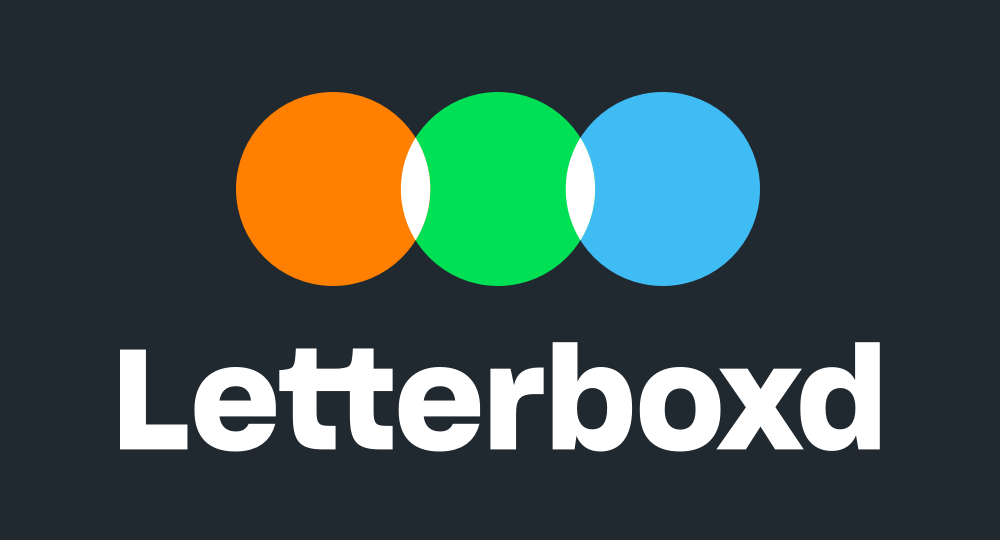What Is The Best Movie Rating Website: IMDb, Letterboxd, Rotten Tomatoes, or Metacritic?

Movie ratings and reviews play a crucial role in helping film lovers discover new movies, gauge public opinion, and make informed viewing decisions. With so many options available, it can be challenging to determine which movie rating website offers the most accurate ratings and best experience. In this blog, we’ll closely examine four of the most popular movie rating platforms – IMDb, Letterboxd, Rotten Tomatoes, and Metacritic – and compare their features and overall effectiveness in assisting movie fans in finding their next great film to watch. I’ll evaluate each site based on criteria such as review aggregation, user-generated content, types of ratings, and overall user-friendliness to help you determine which platform is the best fit for your movie-loving needs.
The quick answer, IMDb and Letterboxd are the two best movie and TV rating websites:
- IMDb and Letterboxd are tied for 1st
- Rotten Tomatoes comes in 3rd
- Metacritic is in 4th
A lesser-known movie rating website is TMDB, also known as The Movie Database, if you want to get another source for ratings, reviews, and information on movies and TV shows.
What is IMDb?
IMDb is an acronym for Internet Movie Database. It is an information source for all things movie and TV as well as one of the premier movie and TV show user rating websites.
IMDb Ratings Service
- IMDb excels in the movie rating space due to its large user base. Per Wikipedia, as of March 2022, IMDb has over 83 million registered users.
- IMDb allows users to rate movies and TV shows on a 1-10 scale. The service will aggregate those ratings into a single score. One of the best aspects of IMDb’s rating service is the ability to see exactly how many other users rated the media in bar graph form. You can see the total number of ratings per number 1-10 as well as the percentage distribution. This bar graph can even be filtered by a few select countries.
- Users are able to leave full-length reviews which can be upvoted or downvoted depending on whether other users found the review helpful. This is a great service to find popular and unpopular reviews. Each user has a voice that can be found and heard among the masses. There are several beneficial features by which you can filter user reviews:
- Hide Spoilers
- Filter by Rating (1-10)
- Sort by: Featured (Descending Order or Ascending Order)
- Sort by: Review Date (Descending Order or Ascending Order)
- Sort by: Total Votes (Descending Order or Ascending Order)
- Prolific Reviewer (Descending Order or Ascending Order)
- Review Rating (Descending Order or Ascending Order)
- A very cool feature that IMDb offers is the “Most Popular Movies” or “Most Popular TV Shows” in the IMDb charts section. IMDb ranks movies and TV shows 1-100 based on how popular they are. This popularity scale is calculated by what people are looking at, rating, and reviewing on IMDb and is updated weekly.
- Another useful feature IMDb offers is the ability to see what streaming platform a movie or TV show is currently on. Unlike Rotten Tomatoes, IMDb also lets you know if you need to rent or buy the media or if it would be included in your streaming platform’s monthly subscription.
- The main reason I have used and still use IMDb over most other movie rating websites is that it has a phone app. The fact Rotten Tomatoes and Metacritic don’t have apps in today’s day and age means they will never be able to compete with the likes of IMDb and Letterboxd.
IMDb Flaws
- As seen by each individual media’s rating bar graph, movies and TV shows get review bombed (1-ratings) or lauded (10-ratings). IMDb does its best to detect and remove attempts to skew the ratings. Still, not every service is perfect. Some movies and TV shows get rated higher than they should and some get rated lower than they should.
- While I don’t consider professional critic reviews and ratings when selecting movies, many people do. There is a reason “movie critic” continues to be a career and websites like rogerebert.com have garnered millions of visits. If there were a critic’s opinion I would consider, it would be Roger Ebert’s. Technically, IMDb does not aggregate critic reviews and ratings on their own. It does include the Metacritic Metascore which is a singular number and color Metacritic comes up with after aggregating critic reviews and ratings. You can see each critic rating and a snippet of their review. There are outbound links leading to these reviews on other websites.
What is Letterboxd?
Letterboxd is an up-and-coming juggernaut in the movie and TV show rating business. It is on par with IMDb and I use the two in conjunction when selecting movies and TV shows to watch. Letterboxd made the smart play of leveraging movie and TV show discussion into a single website and app. Letterboxd considers itself a “global social network for grassroots film discussion and discovery” and I would have to agree. They appreciate being described as “like Goodreads for movies.”
Letterboxd Rating Service
- Letterboxd excels in the movie rating space due to its incredibly devoted user base and growing popularity. Per Wikipedia, as of September 2023, IMDb has over 10 million registered users.
- Letterboxd user ratings are on a scale of 1-5 with the ability to give ½ ratings.
- Letterboxd has three main clickable icons attached to every piece of media you find on the website. You can even see the total number of users that have clicked each of these icons.
- An “eye” which signifies if a movie has been watched or not.
- A “heart” which signifies if you like the movie.
- A “clock” which signifies if you want to add the movie to your watchlist.
- Another useful feature Letterboxd offers is the ability to see what streaming platform a movie or TV show is currently on. Letterboxd lets you know if you need to rent or buy the media or if it would be included in your streaming platform’s monthly subscription.
- Users are able to leave full-length reviews which can be liked by others. When looking deeper into a movie’s reviews, Letterboxd offers several ways to sort the information. You can sort by:
- Rating
- When Reviewed (Newest First or Earliest First)
- Review Activity
- Review Rating (Highest First or Lowest First
- Your reviewsYour liked reviews
- Your friends’ reviews
- Everyone’s reviews
- Just like IMDb, one of the best aspects of Letterboxd is its mobile app. Letterboxd is incredibly user friendly and runs mainly off of user-generated content. The mobile app is becoming one of my favorite regularly used social media apps. Letterboxd has many more incredible features such as user-curated lists which deserve a blog post of their own.
Letterboxd Flaws
- The website search function does not autocomplete search results. This is only a problem on the website, not the app.
- Letterboxd does not include critic reviews. While I don’t consider professional critic reviews and ratings when selecting movies, many people do.
- Since Letterboxd is a “social network for film discussion” it can get dominated by the trending movies. Movie ratings can also be swayed in the form of review bombs and lauds.
- Letterboxd does not currently include TV shows or the ability to rate or review overall TV shows or their individual seasons and episodes. They plan to release this feature in the future, but as of June 2024, they do not have a set date.
What is Rotten Tomatoes?
Rotten Tomatoes aggregates critic reviews and ratings of movies and TV shows into a single percentage score called Tomatometer®. Rotten Tomatoes users can also leave reviews which are combined to form a single percentage score called the Audience Score. Rotten Tomatoes has a section on each individual movie page where you can see which services you can stream, rent, or buy the film from.
Rotten Tomatoes Rating Service
Rotten Tomatoes Tomatometer® Critic Ratings
- Rotten Tomatoes gathers critiques from prominent publications and computes an overall “Fresh” or “Rotten” Tomatometer® score for each movie. Rotten Tomatoes employees read thousands of TV and movie reviews every week from approved sources so they can generate “Fresh” or “Rotten” scores.
- The “Fresh” Tomatometer® score is denoted by a red tomato and means at least 60% of critic reviews for the movie or TV show are positive.
- The “Rotten” Tomatometer® score is denoted by a green splat and means that less than 60% of critic reviews for the movie or TV show are positive.
- If a TV show or movie has a consistent Tomatometer® score of 75% or higher it will receive the “Certified Fresh” stamp of approval.
Rotten Tomatoes Audience Scores User Ratings
- Rotten Tomatoes user ratings are called Audience Scores. These ratings can serve as a helpful tool for swiftly assessing critical consensus on the likelihood the average person will enjoy the film.
- If a movie or TV show has a full red popcorn bucket, it means at least 60% of critic reviews for the movie or TV show are positive.
- If a movie or TV show has a tipped over green popcorn bucket, it means that less than 60% of critic reviews for the movie or TV show are positive.
Rotten Tomatoes Flaws
- The main negative of the Rotten Tomatoes rating service is that it does not display an actual rating score 1-5 or 1-10 for any given movie or TV show. Users can give ratings from 1-5 but the website only displays a percentage for how many people have rated the media positively. This makes it harder to compare movies against one another. You can only compare if one movie was received more positively than another.
- There are often major discrepancies between critics Tomatometer® ratings and user Audience Score ratings. This isn’t Rotten Tomatoes’ fault. An example is the movie Gravity. 96% of critics rated the movie positively while 79% of users rated the movie positively. This is a 17% difference for a movie that won seven Oscars (this does, however, help prove my point that the movie is overrated). Sticking with Gravity as an example, the movie’s 96% Tomatometer® score is 1% better than Goodfellas’ 95% Tomatometer®, 7% better than Shawshank Redemption’s 89% Tomatometer®, and 4% better than Pulp Fiction’s 92% Tomatometer®. Three of arguably the greatest movies of all time. The critics, do indeed, get things wrong. Thankfully, these movies’ Audience Scores are much higher than Gravity’s. Users got it right. If I am going to use Rotten Tomatoes ratings for anything, I will only use the Audience Scores.
- When it comes to user-generated content and user-friendliness, Rotten Tomatoes lacks some important features that other movie ratings sites include. When taking a closer look at the reviews and ratings for a particular movie or TV show you are unable to sort the ratings in any way. You cannot see how many 1-star, 2-star, 2.5-star, etc. ratings there are. You cannot find popular reviews to read since the reviews are sorted by recent date and the only thing you can do to someone’s review is flag it.
- Rotten Tomatoes does not have an app. This can alienate your audience in today’s day and age.
- Rotten Tomatoes “Movies To Stream At Home” web application, which was mentioned in my blog “How To Find The Perfect Movie To Watch For Movie Night,” is a tool that helps users find a movie to watch based on Rotten Tomatoes ratings and which platform the movie is streaming on. While almost perfect, there are two minor flaws:
- When selecting a movie based on a streaming platform, the listed platforms don’t distinguish between which movies are included in your monthly subscription and which movies you need to pay extra for. This is an issue with Prime Video. You will need to select a movie. There is a section near the top called “Where To Watch.” In this section you can see which services you can stream, rent, or buy the film from.
- When using the Sort feature to sort by Tomatometer® (Highest), Tomatometer® (Lowest), Audience Score (Highest), Audience Score (Lowest), the movies are sorted in a way that makes it nearly impossible to use. Movies that have barely been reviewed or watched appear at the top. While the feature does help you sort by top-rated movies, this feature does not help you find top-rated and popular movies. An easy fix is to allow a secondary sort feature which lets users sort by the number of reviews a movie or TV show has. This way you can sort by Tomatometer® (Highest) and Reviews 10,000+ to find movies that are both popular and critically acclaimed.
What is Metacritic?
Metacritic aggregates movie and TV show reviews and ratings from users and prominent critics into two scores, Metascore and Userscore.
Metacritic Ratings Service
Metacritic Critic Ratings
- Much like Rotten Tomatoes, Metacritic aggregates reviews from a diverse array of esteemed critics and assigns a score out of 100. The culmination of these scores is a singular number, color, and description known as the Metascore. The colors range from Red (Negative reception), Yellow (Mixed reception), to Green (Positive reception). The descriptions range from Overwhelming Dislike, Generally Unfavorable, Mixed or Average, Generally Favorable, and Universal Acclaim.
- If a movie gets an 81+ average critic rating it will receive a “metacritic MUST-SEE” stamp of approval. For TV shows, this becomes a “metacritic MUST-WATCH” stamp of approval.
Metacritic Userscore User Ratings
- Metacritic user ratings are known as the User Score. The User Score follows the same service as the Metascore with colors and descriptions except ratings are on a 1-10 rating scale.
Metacritic’s Flaws
- Metacritic sometimes does not have a User Score for older or lesser-known movies. This is even true for some major directors’ early movies. Francis Ford Coppola’s first two films, “Dementia 13” and “You’re a Big Boy Now” are missing User Scores. While they are not popular movies, they have thousands of user ratings and reviews on Rotten Tomatoes, IMDb, and Letterboxd. In order for a movie to start showing an average User Score, there needs to be at least 4 user ratings. This isn’t just a symptom of Metacritic’s low and diminishing user base. Quentin Tarantino’s movie, “Deathproof,” does not show up in searches on Metacritic while it has hundreds of thousands of ratings and reviews on other movie rating websites. Instead, it only shows up under its dual release name, “Grindhouse.” This is two movies in one, combining Tarantino’s “Deathproof” and Robert Rodriguez’s “Planet Terror.”
- Following Rotten Tomatoes lead, Metacritic’s critic and user ratings are vastly different from movie to movie. This isn’t Metacritic’s fault. Again, this is why I don’t like to look at critics ratings as a basis for selecting a movie.
Conclusion
In summary, IMDb and Letterboxd offer the best overall experience for movie enthusiasts seeking to rate, review, and explore films, whereas Rotten Tomatoes and Metacritic provide valuable aggregated critic scores. Your choice ultimately hinges on your specific needs and preferences as a movie aficionado.


